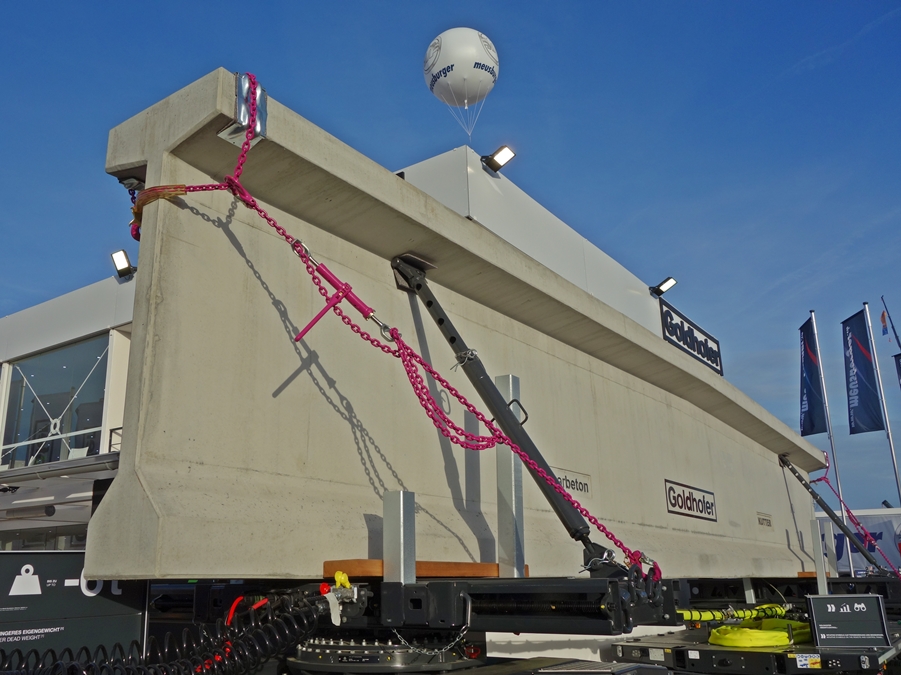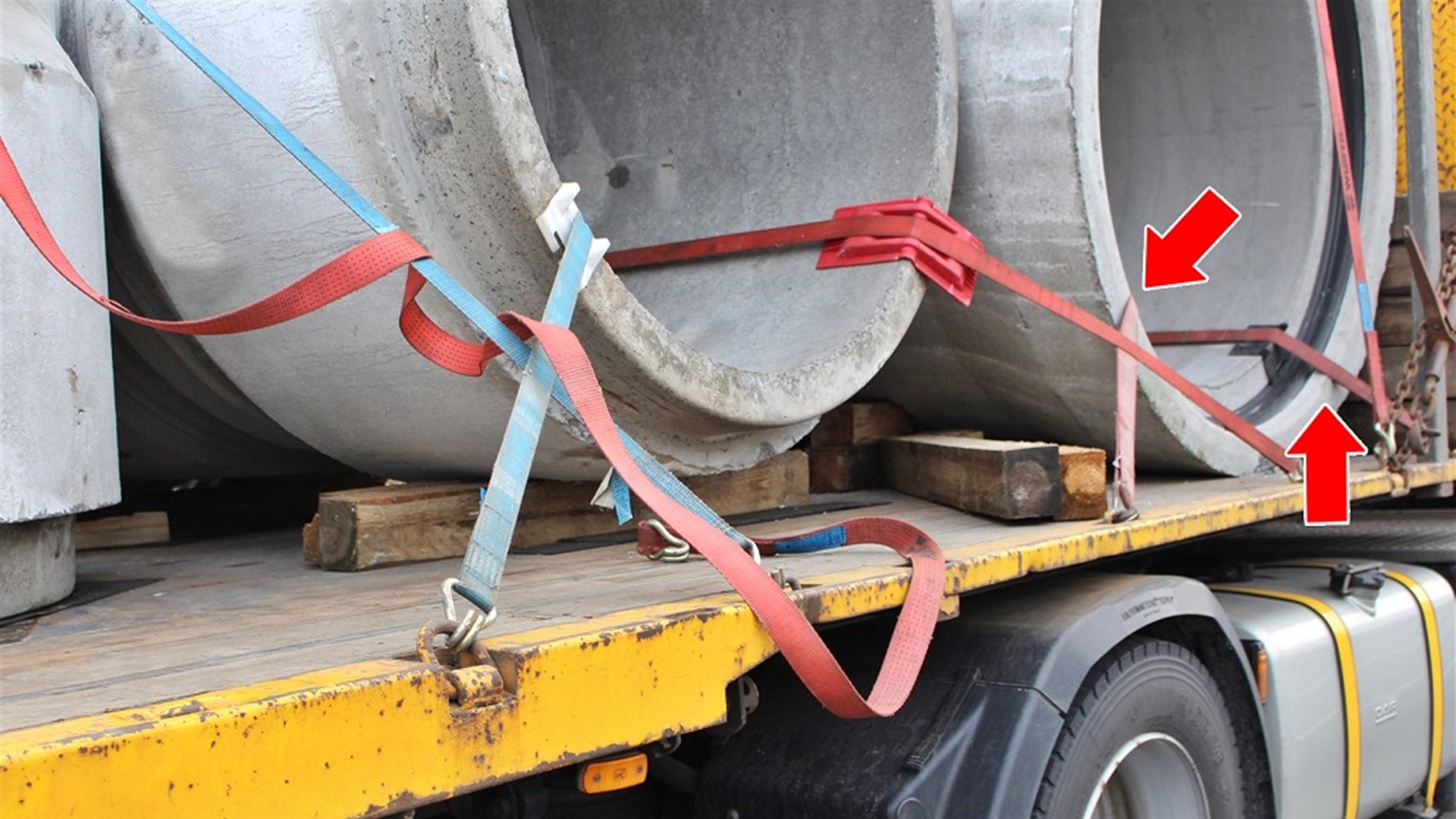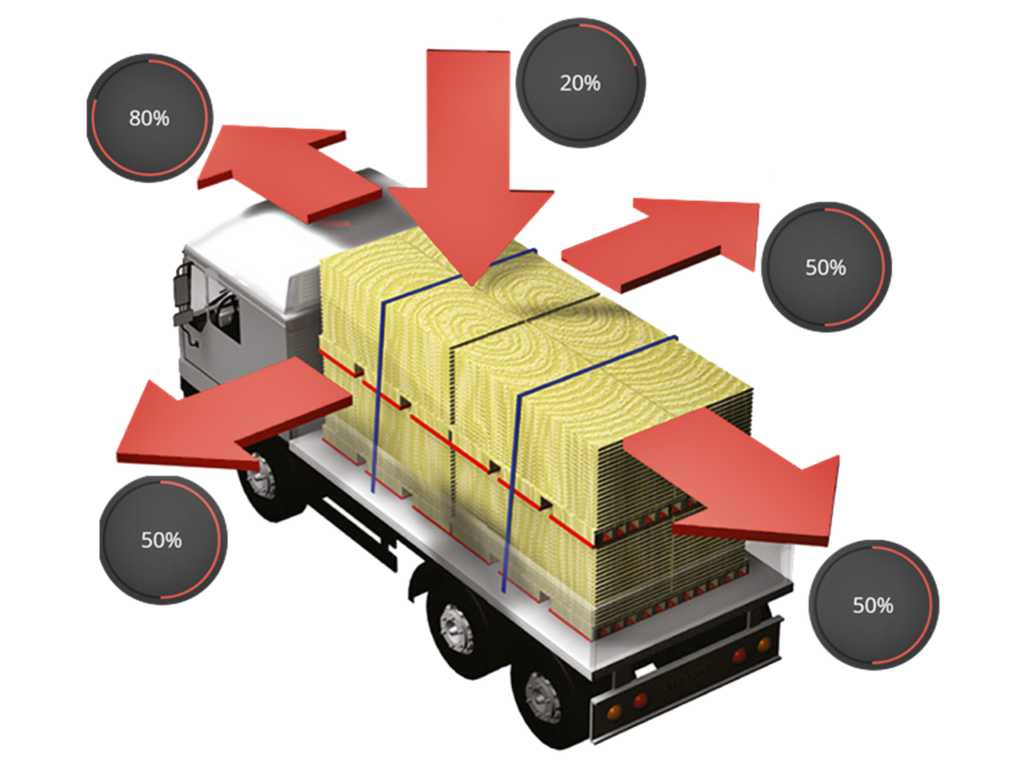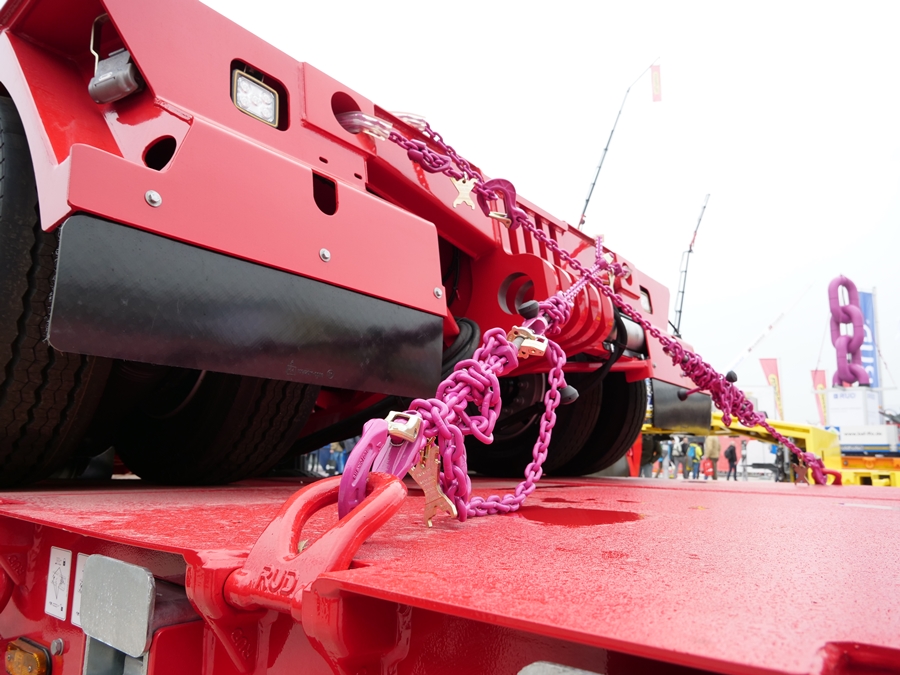Part 2 of the 2-part article. Click here to read Part 1.
Load securing during transportation faces many challenges, especially when dealing with loads that have sharp edges. The sharp edges pose a risk to the integrity of lashing equipment and can potentially lead to accidents, jeopardising the safety of vehicle occupants and other road users. Hence, understanding the potential dangers associated with sharp edges is critical to ensure safe and efficient transportation. Read Part 2 below.
Reduction of Lashing Capacity
With loads where the lashing chain goes over sharp edges, we recommend reducing the Lashing Capacity (LC) by 25% or using a larger chain size. The Load Restraint Guide 2018 of the National Transport Commission (NTC) outlines the rules for lashing loads with sharp edges.

For example, if a lashing chain has a rated capacity of 10,000 daN, the effective securing capacity with a sharp corner load would be reduced by 25%, to 7500 daN.
ICE Grade 120 Lashing Chains
ICE Grade 120 lashing chain can replace a Grade 80 lashing chain of the next largest nominal thickness in direct lashing. ICE 120 is lighter than Grade 80 by 45% and has a breaking force up to 60% higher than Grade 80. This means that using an ICE 120 lashing chain can result in a large weight reduction, easier assembly, and better safety.

How can Endless Chains help?
In situations where suitable lashing points are unavailable or the existing points are unsuitable, using hooks or shackles for connecting the lashing chain can expose the connecting element to bending stresses. This can compromise the integrity of the connection and lead to potential failure.
Endless chains, designed to eliminate the need for separate hooks or shackles, provide a safer alternative. With an endless chain, the lashing capacity remains consistent throughout the entire chain loop, eliminating the potential weak points associated with hooks or shackles. Moreover, doubling up an endless chain reduces the effects of sharp edges, as the load is distributed across a larger surface area, which limits the stress on individual chain links.
ICE-Endless-Chain and ICE-Multi-shortening Claw
When combined with the ICE-Endless Chain, the ICE-Multi-shortening claw forms a closed chain system that is easily adjustable and can be opened without tools. This flexibility allows for convenient use in situations where the load's dimensions may vary. This configuration is particularly beneficial for securing loads with unconventional shapes, such as stone blocks or concrete, which may lack dedicated lashing points.
The advantages of such a configuration are:
Conclusion:
Understanding and addressing the challenges posed by sharp edges during load securing is crucial for ensuring safe and efficient transportation. By implementing the guidelines of the Load Restraint Guide and utilising appropriate protective measures such as edge protectors and endless chains, we can effectively mitigate the risks associated with sharp edges, ensuring the integrity of the lashing equipment and the safety of all road users.
Article copyright to RUD Group. This information is accurate at the time of publication, and RUD Australia takes no responsibility for any errors, inadvertent or otherwise.
This is a 2 part article.
Load securing during transportation faces many challenges, especially when dealing with loads that have sharp edges. The sharp edges pose a risk to the integrity of lashing equipment and can potentially lead to accidents, jeopardising the safety of vehicle occupants and other road users. Hence, understanding the potential dangers associated with sharp edges is critical to ensure safe and efficient transportation.
Sharp edges can cause considerable wear and tear on lashing equipment, primarily due to the concentrated stress they can impose on the lashing material. The repetitive bending and flexing of the lashing equipment as it goes over these edges can lead to fatigue, weakening the material and potentially causing failure. This failure can result in a sudden snap, a gradual weakening, or a distortion in the equipment's shape, resulting in a compromised load restraint system and a potential safety hazard.

In this article, we will address the question of what is considered a sharp edge and what measures should be taken to ensure safety when working with such angles.
Australian National Transport Commission and sharp edges
The National Transport Commission (NTC), in its Load Restraint Guide 2018, emphasises the importance of protecting lashing chains from sharp edges. This guide outlines a clear correlation between the sharpness of a corner and the chain's lashing capacity, highlighting the critical need to consider the load's geometry when selecting and using lashing equipment.
As per the guide, the lashing chain should be protected over sharp edges or rough surfaces to maintain its full lashing capacity.

When the corner radius (r) is less than the chain size (d), the chain's lashing capacity is reduced by 25%. The above figure is taken from the Australian Load Restraint Guide 2018.
Understanding the Corner Radius and Chain Diameter
When assessing load-securing options, the radius of the sharp edge should be considered in relation to the degree of flexibility of the lashing equipment. The corner radius (r) refers to the radius of the curve at the corner of the load, while the chain diameter (d) refers to the diameter of the chain link. Understanding the relationship between the two is critical because it influences the choice of lashing equipment.
To ensure safe and effective load securing, the corner radius should always be greater than the chain diameter. This ensures smooth chain movement over the corner without any risk of jamming, kinking, or undue stress. When the corner radius is less than the chain diameter, the chain experiences increased bending stress, leading to potential damage and reduced functionality.
Protective measures must be implemented to reduce the risk when the corner radius is smaller than the chain diameter. Edge protectors are an excellent option because they serve as an intermediary between the chain and the load, preventing direct contact and protecting the chain from premature wear and tear.
To be continued ...
Article copyright to RUD Group. This information is accurate at the time of publication, and RUD Australia takes no responsibility for any errors, inadvertent or otherwise.
Part 2 of the 2-part article. Click here to read Part 1.
The RUD Lashing Point Range
To cater to various load-securing needs in transport, RUD offers a comprehensive range of lashing points, including weld-on and bolt-on options.
Weld-On Lashing Points:
RUD offers a large range of weld-on lashing points for all load-securing solutions.
LPW:
LRBS-FIX:
RUD Bolt-On Lashing Points:
RUD also offers bolt-on lashing points for a variety of load-securing requirements.
LVLBG-PLUS:
OPTILASH-FIX:
OPTILASH-CLICK:
SLP:
Why Partner with RUD for Your Lashing Needs?
There are several compelling reasons to choose RUD for your lashing point requirements:
By partnering with RUD for your lashing point needs, you are guaranteed exceptional quality, superior safety, and efficient operation of all your load securing and lashing requirements.
Article copyright to RUD Group. This information is accurate at the time of publication, and RUD Australia takes no responsibility for any errors, inadvertent or otherwise.
When transporting heavy machinery and cargo, secure and reliable lashing points are critical. These critical components not only guarantee the safety of goods during transit but also minimise potential damage and costs. In addition, appropriately secured loads significantly reduce the risk of accidents caused by shifting cargo, protecting drivers, passengers, and other road users*.
* If you want more details on the importance of load securing, including the NHVR Load Restraint Guide, read our 2-part article published earlier:
The Importance of Secure Lashing During Transport
Imagine a scenario where a load shifts unexpectedly during transport in your heavy vehicle. Not only could it damage the cargo itself, but it also poses a significant risk of accidents for drivers, passengers, and other road users. This is why proper load restraint using certified lashing equipment, as mandated by the Australian Load Restraint Guide, is absolutely crucial.

RUD: A Global Leader in Lashing Solutions
RUD is a world leader in the lifting and lashing industry and offers a comprehensive selection of lashing points with capacities ranging from 3,000 to 32,000 daN. These lashing solutions cater to diverse sectors, including the lashing of heavy and large loads in cargo transportation, vehicle transport, railway operations, and construction equipment.
Uncompromising Quality and Compliance
RUD takes quality and compliance seriously. All the RUD lashing points undergo rigorous 100% crack testing and adhere to the strictest quality control procedures. This ensures that you receive reliable and compliant products that meet the demands of heavy vehicle transport.
Flexibility and Adaptability for Optimised Loading and Unloading
When it comes to efficiency, RUD's lashing points are designed for unmatched flexibility during loading and unloading operations. The compact designs with large eye diameters allow greater versatility when using different lashing equipment. The diverse welding surfaces also enable easy and seamless integration into the truck or trailer chassis during the build process.
For instance, the RUD OPTILASH-CLICK system stands out for its ability to be moved along the chassis, reducing the required number of lashing points. This translates to cost savings and a lighter weight for your heavy vehicle.

Benefits of Choosing RUD Lashing Points
There are numerous advantages to incorporating RUD lashing points into your transport operations:
Without Trucks, Australia Stops! But when trucks need to go, Endurequip keeps them going!
To be continued ...
Article copyright to RUD Group. This information is accurate at the time of publication, and RUD Australia takes no responsibility for any errors, inadvertent or otherwise.